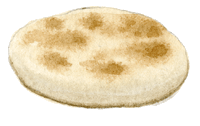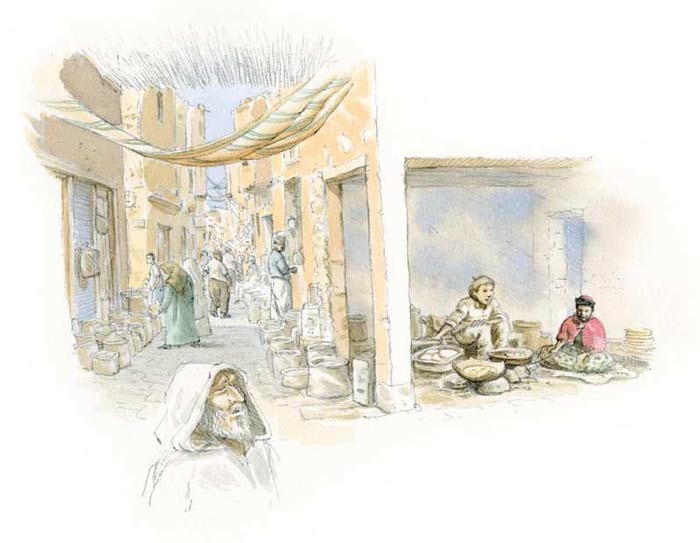Matlou

Form: Griddlecake
Country of origin: Algeria
What distinguishes it from other methods of bread making: Hard-wheat semolina griddlecake made with leaven (or yeast) cooked in the oven or in a tajine dish
Category of bread: (2) Here, we must make a distinction among the flat breads, between khobz (made from soft wheat), kesra (made from unleavened hard wheat) and matlou (made from proofed hard wheat)
Particularity: Eaten especially with chorba, a soup made during Ramadan
Ingredients: Fine semolina; wheat flour; baker’s yeast; salt; warm water

Algeria
Algeria has a very wide variety of bread and griddlecakes, some risen and some not, which have been influenced by its history, from the French colonization to the Chinese today. In ancient times, the Greeks, Berbers, Carthaginians, Romans and Byzantines all set foot in this land before the great Arab conquest started by the Umayyad Caliphates in the 7th century. Rome’s granary, Africa romana was always coveted for the abundance and quality of its grains. It is therefore no surprise that Algerians are still bread lovers and bread innovators. Using both soft and hard wheat, these breads are often found throughout the Maghreb under different names. It’s not difficult to recognize them.
Unlike kesra, which is a flat bread, matlou was essentially made in homes until the French arrived and opened bread bakeries; it is a sourdough semolina bread. Today, it is most often made with yeast. The dough is a mixture of fine semolina and wheat flour sprinkled with baker’s yeast, to which is added a pinch of salt. Once made, the griddlecakes are taken to the village oven, found in most villages in the entire Mediterranean periphery. Griddlecakes can also be cooked in a tajine dish over a source of heat.

